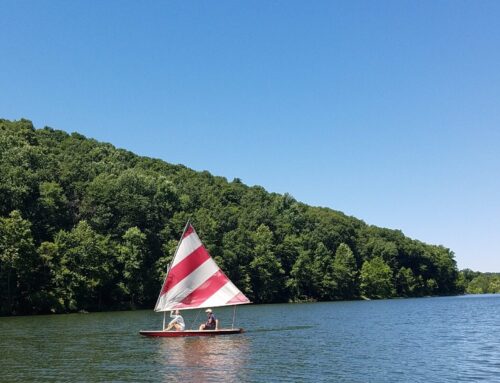 The mission of the Savannah River Clean Water Fund is to protect and restore forests in the Savannah River Basin to help provide safe, reliable, and affordable drinking water for the communities and businesses in the region. The Fund was formed based on the shared recognition among public and private interests in the Savannah River Basin of the explicit connection between the Basin’s land resources and uses and their impacts on raw water supplies.
The mission of the Savannah River Clean Water Fund is to protect and restore forests in the Savannah River Basin to help provide safe, reliable, and affordable drinking water for the communities and businesses in the region. The Fund was formed based on the shared recognition among public and private interests in the Savannah River Basin of the explicit connection between the Basin’s land resources and uses and their impacts on raw water supplies.
To maintain the quality of the Savannah River as a drinking water source, the Fund has set a goal of maintaining 60% natural cover in the watershed, applied a model to identify priority parcels for conservation based on their higher value for water quality maintenance, and is partnering with major water utilities and other investors to permanently protect these high-priority parcels. Through Fund’s conversations with these utilities, it has become clear that although a lot of research exists supporting the water quality maintenance services provided by forests, the utilities and industries would like more information specific to their watershed that quantifies the economic benefits.
The Center for Watershed Protection led a small study for the Fund to begin to address this need. The area of interest to the Fund is the Lower Savannah River Basin, a 2.8 million acre watershed that provides water to 550,000 residents, and many commercial/industrial users in South Carolina and Georgia. The goal of the study was to evaluate the relationships between upstream land uses—such as forests, cities, or farms—and downstream water quality and drinking water treatment costs using examples from the Lower Savannah River Basin. Land use and water quality data from the upper part of the Basin (i.e., “upstream”) were compiled and evaluated, along with water quality data and treatment costs at the Beaufort-Jasper Water and Sewer Authority’s Chelsea Water Treatment Plant in the lower part of the Basin (i.e., “downstream”). A review of relevant studies from outside the Savannah River Basin supplemented this analysis.

This project’s key findings and recommendations are summarized below and in more detail in this document.
Finding #1: Upstream Land Use Affects Downstream Pollution. More forests upstream are linked to lower amounts of pollution delivered to the Savannah River, while more developed land upstream is linked to higher amounts of pollution delivered to the Savannah River.
Finding #2: Pollutants from Upstream Land Use Affect Levels of Compounds that Make Drinking Water Unpalatable. While data from the Savannah River Basin was insufficient to identify specific relationships, studies from outside the Basin show a link between pollutants from upstream land use and the formation of drinking water contaminants that affect taste and odor (specifically, geosmin and total organic carbon).
Finding #3: Levels of Compounds Affecting the Taste and Odor of Drinking Water Influence Treatment Costs. A review of data from the Beaufort-Jasper Water & Sewer Authority’s Chelsea Water Treatment Plant showed the utility spent over $68,000 in the first half of 2021 alone to remove “preventable” amounts of these compounds. However, sufficient data to determine predictive relationships between upstream land cover change and downstream water treatment costs were not available. Based on a literature review, nutrient reductions from forest conservation would likely reduce amounts of taste-and-odor compounds requiring the most expensive treatment.
The findings from this study support the Savannah River Clean Water Fund’s mission to conserve and protect forests to improve water quality for communities and businesses in the Basin. A key recommendation is to conserve upstream forest land and manage these lands in a way that considers and prioritizes the relationship between land use and water quality, which would help minimize drinking water treatment costs. Another key recommendation from this project is to continue investing in research (e.g., water quality monitoring and modeling studies) to shed additional light on the complex relationship between land use and water quality in the Basin.
This work was funded by International Paper through a grant provided to The Nature Conservancy.
For more information about this project, contact Jordan Fox at jf@cwp.org.






